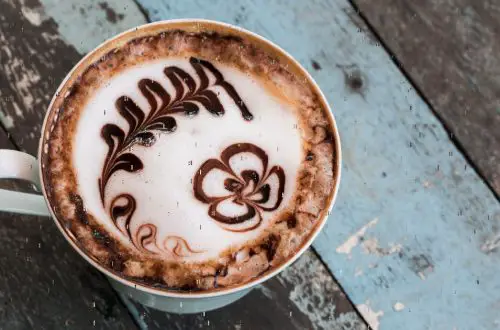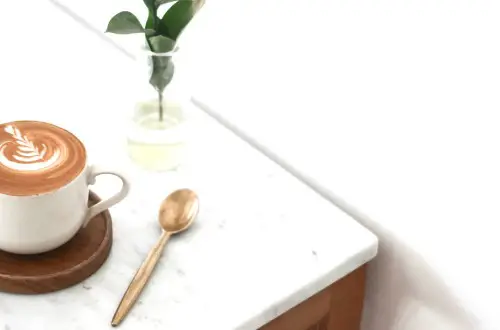Eco Coffee Series: Are Coffee Cups Recyclable in Australia?
Most disposable coffee cups are not recyclable in Australia! They may be made predominantly of paper, but they usually contain a plastic lining to make them waterproof. There are some exceptions, but it’s quite complicated, so let’s investigate further!
Answering the question “are coffee cups recyclable in Australia” isn’t as simple as you might first think. Most can’t be recycled at all, some can be recycled in certain circumstances, and others can be partially recycled. Often it’s not clear by the packaging which is which.
There’s no way I could give up coffee but I do want to be as environmentally friendly as possible. If you feel the same way but aren’t sure which way to turn, I’ll break everything down for you in this in depth guide.
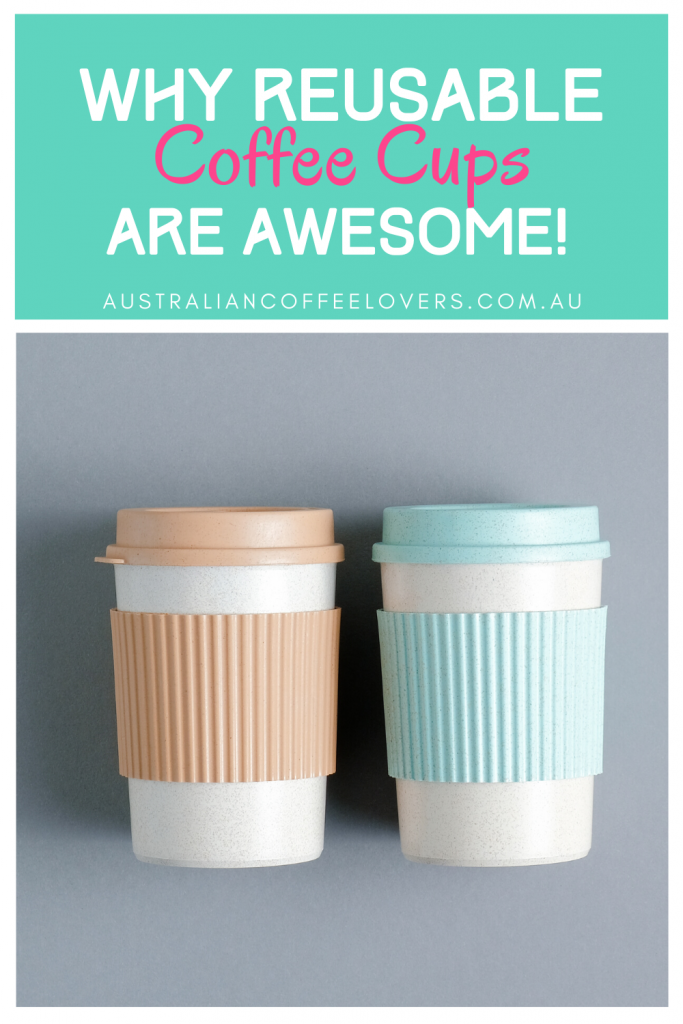
Contents
What are Disposable Coffee Cups Made of?
Recyclable coffee cups are mainly made from paper, and yes, I can already hear you thinking, “But paper is recyclable isn’t it? Polystyrene cups are the real problem!”.
You’re partly right. Compared to polystyrene cups, paper cups definitely look like the better option. Unfortunately it’s not that simple.
Paper cafe cups are lined with a type of plastic called polyethylene. This makes them waterproof, but isn’t recyclable and can also release methane (a potent greenhouse gas) when in landfill.
Don’t Put Coffee Cups in the Recycling Bin!
Again, I can hear you thinking, “But it’s only one cup?”, and, maybe you do only drink one cup of coffee a day, but how many people do you think buy disposable coffee cups every day in Australia? Spoiler: We are currently disposing of over 1 billion coffee cups per year!
So why are coffee cups not recyclable? It’s pretty complicated, but here’s a simple overview. Recycling plants can’t process the polyethylene the same way it processes the paper. The two materials are difficult to separate, meaning the paper cup can’t be processed properly and can cause damage to the machinery.
Removing non-recyclable products from a batch of recycling is a lengthy and costly process so even plastic contamination at this small level can lead to the whole batch being thrown in landfill.
Which Coffee Cups are Recyclable?
Don’t worry! It’s not all doom and gloom. There are companies that are working to change things.
One in particular is Detpak. Their RecycleMe programme has developed a unique lining for hot and cold coffee cups. The programme is backed by ‘specially designed collection networks’ which guarantees all packaging will be diverted from landfill and recycled into paper products. So far, globally, they’ve collected just over 1.5million cups and saved 415 trees worth of paper from being harvested.
That’s amazing, I hear you say. Well, it is – but there’s a catch. They have to be recycled at special collection points, you can’t just throw them in your normal recycling bin. There’s only about 60 of these in Australia right now, so finding one could be a lot of hassle. Don’t despair though, their network is expanding, and if you live on the East coast there’s already plenty of collection points around. So if you’re asking yourself which coffee cups are recyclable, then even though they still have plenty of work to do, Detpak is leading the charge.
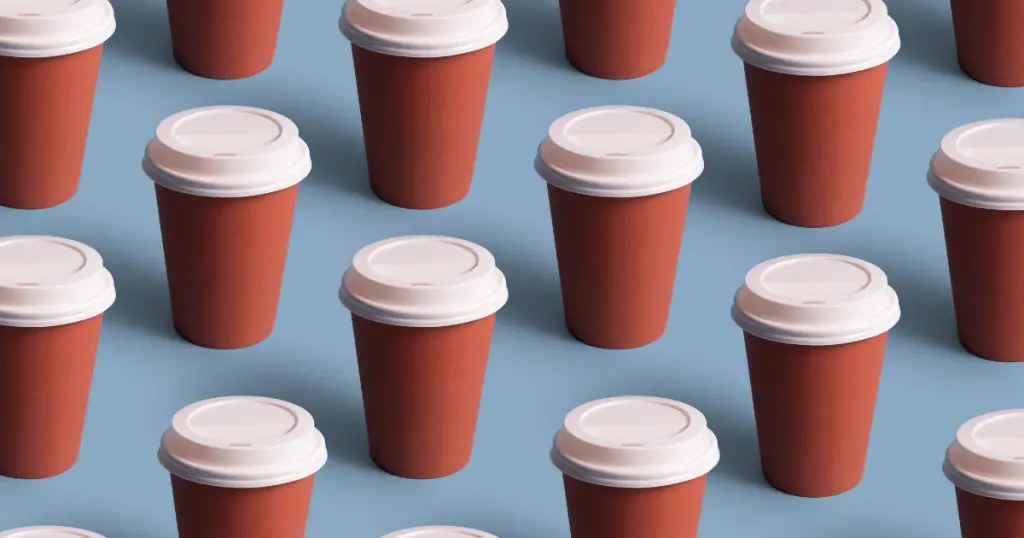
Are Coffee Cup Lids Recyclable?
So that’s the cups themselves, but are coffee cup lids recyclable? The good news is, yes! While coffee cups aren’t recyclable because of their polyethylene lining, lids are generally made from regular plastic, and so can be thrown into your regular recycling.
There are a couple of exceptions to this rule, so remember to always check your local recycling schemes before you throw it in there!
Are Coffee Cups Compostable?
Now here’s where it gets a bit more complicated (I know, I’m sorry). Some coffee cups claim to be compostable. I can hear you again, “Oh great, I can just throw it on the compost heap in my backyard!”. I’m afraid not.
While your backyard compost heap probably does produce great compost, commercial composting is optimised to break down even the toughest of materials through temperature, oxygen and shredding controls. Even the best domestic compost heap won’t produce the sustained 10 day period of 55°C that BioPak state their PLA bioplastic products need to compost down.
Materials often need specific conditions in order to break down, so if an item says it’s compostable or biodegradable and it ends up in landfill, chances are, the conditions are far from ideal and so it doesn’t compost.
The Best Ways to Make Your Coffee More Eco
Once again, I’m reading your mind, “This is all so complicated”, I hear you say. It feels like that, I know but don’t panic, companies like Detpak are working on ways to keep your coffee cups waterproof and recyclable at the same time.
So while we wait, here’s a few ways you can help out!
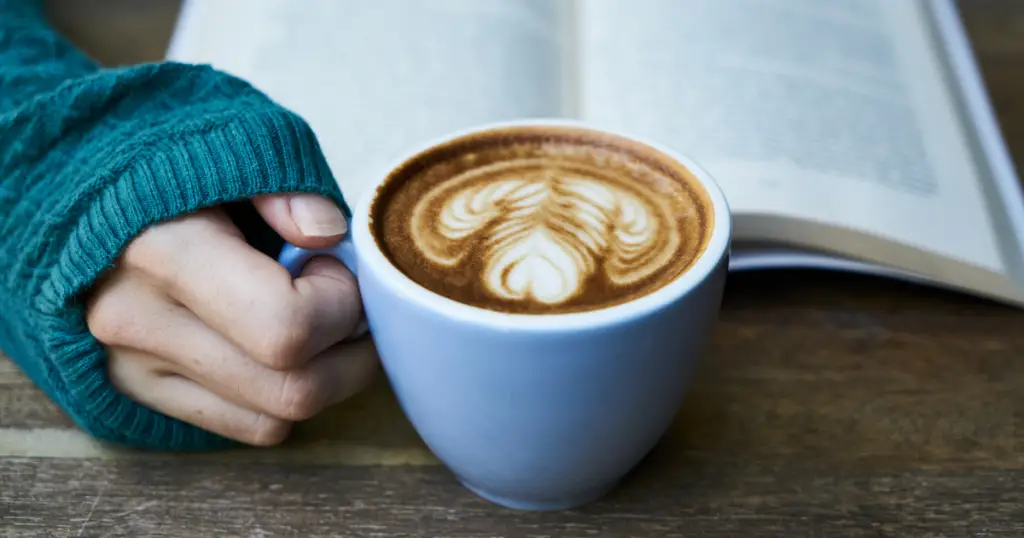
Sit Down
Drink in! Relax, read your report and sip your first, second and third coffees of the morning out of a lovely ceramic mug. This is the easiest way to cut out paper coffee cups, so sink back into a squishy sofa and worry no more about polyethylene or methane gas.
Say No to Lids
I know, I know, we all live such busy lives, drinking in isn’t always possible, especially when it’s only 9am and we’re already on our way to the third meeting of the day. So instead, try saying no to that lid!
After the first few sips they’re pretty much unnecessary, so why not ask for your coffee in a larger size cup to avoid the first sip spillage? (You may even get a bit extra for free!)
Use a Reusable Cup
Okay, so if like me, you frequently spill coffee down your white shirt even with a lid, why not look into a reusable cup?
There are so many options for an eco coffee cup in Australia, from BPA free plastic to bamboo to ceramic to glass. Remember, the best one for your friend is not always the best one for you, so do your research and be rewarded with a reusable coffee cup that should last you for years.
Some coffee shops even offer a discount for customers who use their own cups!
Check out our top recommendations and the ones I personally use in this article!
Dispose of Single Use Cups Properly
If you have absolutely no other choice, and a paper cup is all there is, then make sure you put the lid in the recycling and the cup in a general waste bin. You don’t want your cup tainting the whole batch of recycling after all.
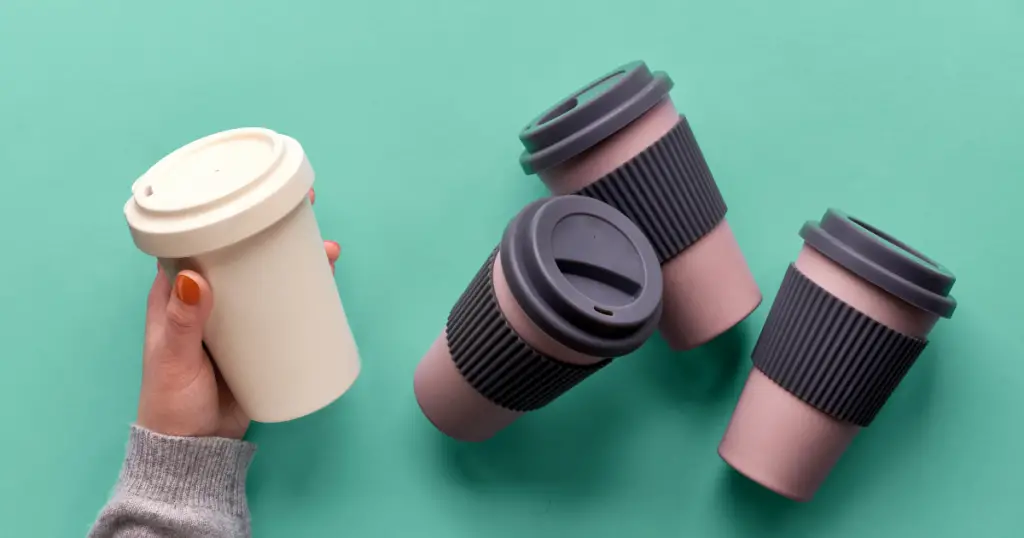
FAQs
Are Styrofoam Cups Recyclable
Short answer – No.
Long answer – Styrofoam doesn’t break down completely in the same way biodegradable materials do. Instead, it breaks down into smaller pieces which can stay where they are for hundreds, if not thousands, of years, releasing harmful chemicals and being eaten by animals. Essentially, they are much, much worse than paper cups.
Are Coffee Pods Recyclable?
Yes and no. On the whole, coffee pods are made from a number of different materials, and aren’t widely accepted in recycling plants. Some companies are working towards pods which can be thrown in your general recycling, but these aren’t widely used yet.
Some companies, including Nespresso, have their own recycling schemes for their pods. Customers are encouraged to return their used pods to Nespresso (in one of four ways), who then send them to a specialist recycling plant in NSW.
Your best option would be to purchase reusable and refillable coffee pods that can be filled with your favourite coffee and reused over and over. Check out our favourites here!
Where can I find out more?
PlanetArk, BioPak and Detpak all have lots of useful information on recycling coffee cups on their websites.
Specific companies, such as Nespresso, should have details of their own recycling schemes on their websites.
Remember to always check with your local recycling scheme if you’re not sure if something can be recycled.
For more coffee tips check out our accessories page next!




